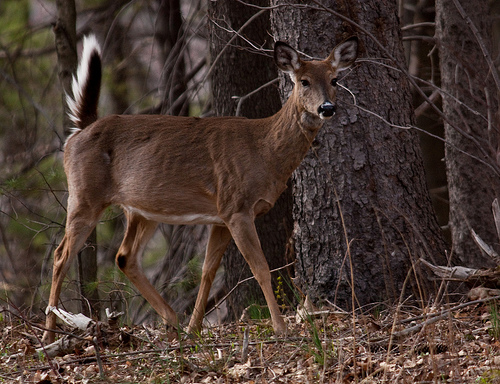Deer hunting is both challenging and fun, but common sense precautions while handling a processing white-tailed deer should be taken after each successful harvest. In fact, proper handling and cleaning techniques are as important as sound deer management practices. Many diseases affect deer in North America, including rabies, tularemia, plague, blue tongue and potentially even chronic wasting disease (CWD). CWD is a disease that affects white-tailed deer, black-tailed deer, mule deer, and elk and is fatal to infected animals.
Biologist believe a protein called a prion causes CWD in deer, and it’s this disease that most hunters are probably worried about. Prions concentrate in the brain, spinal cord, eyes, lymph nodes and spleen. Prions have not been found in meat or muscle tissue. According to the researchers, there is no evidence that chronic wasting disease can be transmitted to humans.
It’s always a good idea not eat any part of a deer that appears sick. While field dressing the animal, wear rubber gloves and do not use household knives or utensils. It’s never good to mix tableware with blood and guts, and your wife will appreciate it too. While field dressing and removing internal organs from the deer, minimize contact with the brain, spinal cord, spleen and lymph nodes as you work. Normal field dressing and fat trimming from meat will remove most all lymph nodes.

Lymph nodes are identified as gray or dark lumps of tissue next to organs or in fat and membranes. Make certain to clean processing knives and equipment of residue and disinfect with a 50:50 solution of household chlorine bleach and water. Wipe down counters and let them dry. Soak knives for one hour for complete disinfection.
While cutting and processing your deer, it is also recommended that you wear rubber gloves too. Make sure to minimize handling of brain or spinal tissues. If removing the antlers, soak the blade of the saw used in disinfectant for one hour. Do not cut through the spinal column except to remove the head. Bone out the meat from the deer and remove all fat and connective tissue (the web-like membranes attached to the meat). This will also remove lymph nodes.
There are some parts of the deer you should never eat, even if the deer looks healthy. Although most hunters do not consume these portions of an animal, do not eat the eyes, brain, spinal cord, spleen, tonsils or lymph nodes of any harvested deer. These parts are tissues where CWD prions concentrate. Dispose of these items and the head in a landfill or by other appropriate means available in your area. Thoroughly clean and sanitize equipment and work areas with bleach solution after processing.
To avoid coming in contact with an affected deer, look for the clinical symptoms of a sick deer while in the field. Clinical symptoms or signs of sick animals, whether from rabies, bluetongue, tularemia, plague, pneumonia, or CWD, are quite similar. However, not all symptoms will occur in all cases of infection. Avoid deer that have lost a sense of fear, appear nervous or highly excited, are grinding their teeth, appear weak, can not stand, have excessive salivation, drooping of the head and ears, have excessive thirst, or are severely emaciated or dehydrated.
To sum up, avoid coming in contact with deer that appear sick, use the simple handling precautions outlined above, and ensure that deer on your property remain healthy by implementing beneficial habitat and deer management practices. Here’s to your next successful harvest and taking care of your deer and yourself.
We found a strange tan substance in the fat layer while butchering our doe. It can be crushed into a grainy substance quite like moistened dry dogfood! Out of all of the 30 yrs we have been butchering our deer we have never seen anything like this and are a bit worried. Any ideas?